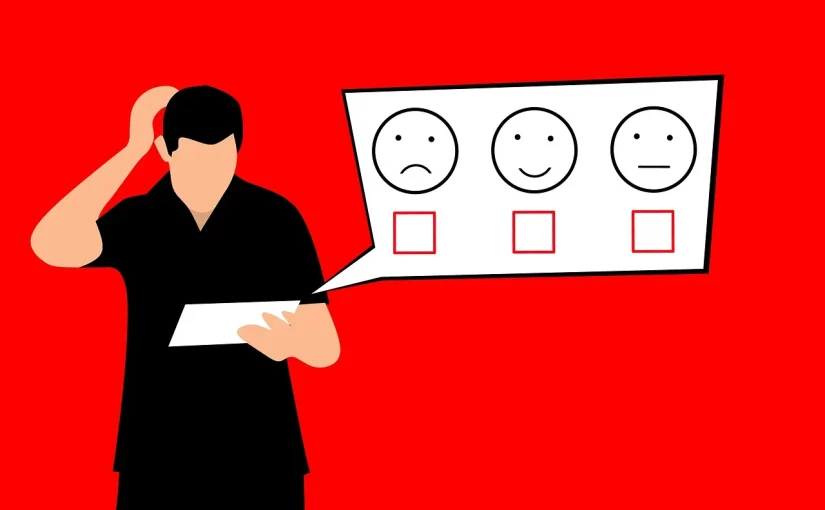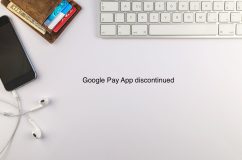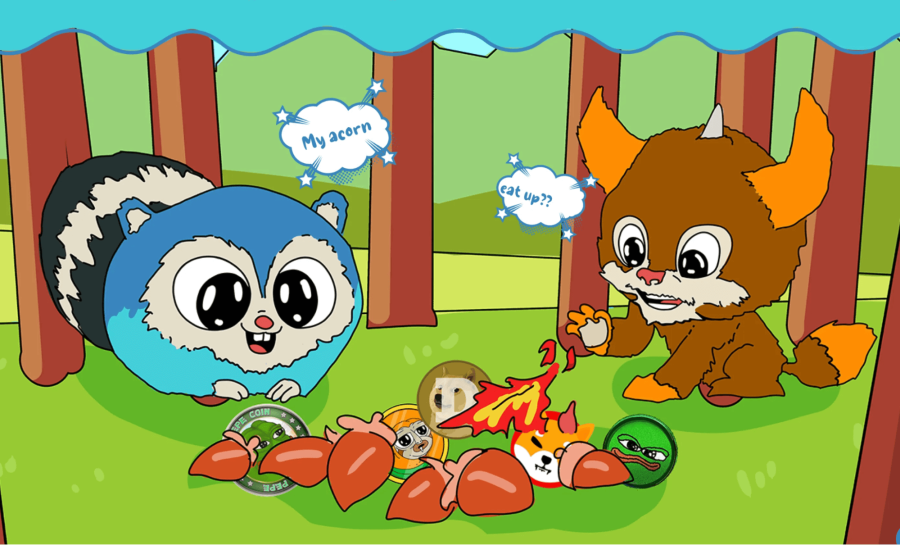I’ll start by taking you to the world of Startup X, a passionate team of entrepreneurs who believed they had the next big thing in the world of software as a service (SaaS). They poured their hearts and souls into creating an innovative product fueled by the desire to make a difference in the lives of their target audience.
However, despite their best efforts, they struggled to gain traction. They faced the disappointment of seeing their hard work go unnoticed and the frustration of feeling like they were missing something crucial. That’s when they realized they needed help.
Do you find yourself and your project in a similar position? Pouring your heart and soul into a project only to see it fall flat? It’s disheartening, but sadly, this is one experience that many startup founders face. The good news is that there’s hope!
Startup X reached out to a product design services provider, and with their help, they were able to turn their fortunes around. The product design team helped them identify their users’ pain points and redesign the product to provide a more seamless customer experience. The impact was nothing short of miraculous.
I understand the struggles that come with being a startup founder. I know how it feels to be passionate about an idea and watch it struggle to take off. In this article, I’ll share some best practices and real-life examples of successful product design for SaaS companies. The goal is to create products that meet but exceed the expectations of your audience.
Why Is Design Important for SaaS?
Design plays a crucial role in the success of SaaS products, whether it is a SaaS application or SaaS website. It makes the product more user-friendly and can also help build trust with customers and differentiate the product from competitors in the SaaS market.
Research has shown that good design can impact a company’s financial performance!
According to a design study spanning 10 year conducted by the Design Management Institute, design-driven companies outperform the S&P 500 by 228%!
So, if you’re running a SaaS company, never skimp on design! Here are some more reasons why design is essential for any SaaS model:
1. User experience
The success of a SaaS software product largely depends on how well it meets the needs of its users.
Design helps create an intuitive and easy-to-use interface, making it easier for users to navigate the product and perform the desired actions.
A well-designed SaaS application can reduce the learning curve, enhance user satisfaction, and increase the chances of retaining customers.
- 2. Branding
The design of a SaaS product can help communicate the brand’s value proposition, personality, and identity.
A visually appealing and consistent design can help create a strong brand image and differentiate the product from competitors.
3. Functionality
Good design helps ensure a SaaS product is visually pleasing and functional. A well-designed product takes into account usability, accessibility, and scalability, which are all essential for a successful SaaS product.
4. Trust and credibility
A poorly designed software-as-a-service product can create a negative perception of the brand and reduce trust and credibility. On the other hand, a well-designed product can build trust and credibility with users, making them more likely to recommend the product to others.
How to Design a SaaS Product for Startups (A 6-step Approach)
To successfully design a SaaS product, you must understand your users deeply. Here is a 6-step approach that can help you achieve that:
1. Understand the User
A SaaS design done without the user in mind is an effort in futility! It’s the most reliable recipe for disaster!
Here are what to do on the journey to design a SaaS product to be able to understand your user:
- Conduct user research: By doing this, you can better understand what your users need and what challenges they face. You can conduct user research through surveys, interviews, or usability testing. And it’s a great way to get direct feedback from your potential customers2.
- Create user personas: User personas are fictional representations of your target users. They can help you understand their goals, motivations, and behaviors. Creating user personas can also help you design a product that meets the needs of your prospective audience.
- Use data analytics: Data analytics can provide valuable insights into how users interact with your product. By analyzing user behavior and usage patterns, you should be able to identify areas for improvement and make data-driven design decisions.
2. Make an Appealing User Interface Design
- The user interface is the face of your software-as-a-service product. And it’s often the first impression users have of your brand.
- A well-designed UI can make it easy for users to navigate your product, complete tasks, and achieve their goals. In contrast, a poorly designed user interface can lead to frustration, confusion, and, ultimately, user churn.
- Investing in UI design can also help differentiate your product in the SaaS market. By creating a unique and visually appealing interface, you can capture your audience’s attention and stand out in a crowded marketplace.
3. Best practices for UI design
When it comes to designing UI for your SaaS product, there are a few best practices to keep in mind:
- Keep it simple: A cluttered and confusing interface can lead to frustration and user churn. Keep the interface simple, intuitive, and easy to navigate.
- Prioritize user experience: Focus on creating an interface that meets the needs of your audience and provides a seamless customer experience. Conduct user testing and gather feedback to ensure your interface meets user needs.
- Consistency is key: Maintain consistency throughout your interface regarding design elements, layout, and interaction patterns. This will help create a cohesive and familiar user experience.
- Pay attention to visual design: A visually appealing interface can significantly impact the user experience. Use color, typography, and imagery strategically to create a unique and memorable interface.
Some examples of effective UI from top SaaS companies
Some SaaS software services have achieved great success through effective user interface design. Here are a few examples:
- Asana: Asana’s UI design is clean, simple, and easy to navigate, making it a favorite among users. The design of the SaaS platform is consistent, with straightforward typography, whitespace, and a cohesive color scheme.
- Slack: Slack is one of the best digital products on the market. Part of the reason is that the SaaS website is visually appealing, with a vibrant color palette and playful illustrations. The interface is intuitive, with a straightforward layout that makes it easy for users to find what they need.
- Canva: Canva, a graphic design SaaS platform, has a visually stunning UI design with design that emphasizes the user’s creative output. The interface of the SaaS website is easy to use, with straightforward navigation and a consistent design.
By following best practices and drawing inspiration from effective user interfaces, you can create a SaaS platform with an interface that meets and exceeds user expectations.
Build a Seamless User Experience
User experience design is creating a user-centric product that meets user needs and goals, according to Techloging.com. A well-designed user experience can increase user engagement and drive customer loyalty. A SaaS UX design that is intuitive, efficient, and enjoyable can significantly impact user satisfaction, retention, and overall success.
Investing in UX design can also help differentiate your product from competitors. By providing UX that exceeds user expectations, you can create a memorable and positive experience, encouraging users to stay and recommend your product to others.
Best practices for UX design
Here are some best practices to keep in mind when making a seamless UX design for your SaaS product:
- Conduct user research: Conduct user research to understand your audience’s needs, goals, and pain points. Use this information to inform your design decisions and create a product that meets user needs.
- Create user personas: Create user personas that represent your targets. This can help you better understand your users and design a user experience that meets their needs and goals.
- Prioritize usability: Prioritize usability by creating an easy-to-use, efficient, and intuitive product. Focus on building a user experience that allows users to complete tasks quickly and without confusion.
- Feedback and guidance: Provide users feedback and advice throughout the customer journey. This can help users understand what actions to take next and reduce frustration and confusion.
- Continuously iterate: Iterate and improve the user experience based on customer feedback and the most relevant data. This can help you create a UX design that evolves with user needs and expectations.
Some examples of effective user experiences
Some SaaS platforms have achieved great success through effective UX design. Here are a few examples:
- Dropbox: Dropbox provides a seamless user experience by making it easy to store, share, and access files across devices. The user interface is intuitive, with straightforward navigation and feedback throughout the customer journey.
- HubSpot: HubSpot provides a comprehensive user experience with marketing, sales, and customer service tools. The UI of the SaaS website is consistent, with a clean and easy-to-navigate design that prioritizes usability.
- Zoom: Zoom provides a user experience that lets users quickly and easily join and host video meetings. The interface is straightforward, with clear instructions and feedback that guide users through the process.
Develop a Unique Brand Identity
As a SaaS startup, you’re entering a crowded and competitive market. And one of the best ways to stand out is by developing a solid brand identity that resonates with your targets.
Your brand identity is more than just a logo or a name. It’s the essence of who you are as a company. It sets you apart from the competition and helps you connect with your customers.
Think about it – when you hear the name “Apple” or “Google,” what comes to mind? Their brand identity is so strong that it’s immediately recognizable. And it’s helped them become some of the most successful companies in the world.
However, developing a brand identity isn’t just about creating a logo or picking out some colors. It’s about understanding your target audience, defining your values and mission, and creating a consistent voice and tone across all touchpoints. It’s about building trust and connecting with your customers beyond just your product.
By developing a strong brand identity, you can differentiate yourself from competitors, build brand loyalty, and establish a unique and recognizable presence in the market. So don’t underestimate the power of a well-crafted brand identity – it could be the key to your success as a SaaS startup.
Best practices for developing a brand identity
Here are some best practices to consider when developing a brand identity for your SaaS platform:
- Define your brand values: Define your SaaS business model, brand values, mission, and vision. This will help you create an authentic brand identity that resonates with your audience.
- Understand your target audience: Understand your target’s needs, preferences, and pain points. This can help you create a brand identity that speaks directly to them and differentiates you from competitors.
- Choose a brand name and logo: Choose a brand name and logo that are memorable, distinctive, and easy to recognize. Ensure your brand name and logo align with your brand values and messaging.
- Develop a brand voice and tone: Develop a brand voice and tone that aligns with your brand values and resonates with your target audience. Use this voice consistently across all marketing materials and communication channels.
- Create brand guidelines: Create brand guidelines that outline your brand identity elements, including color palette, typography, imagery, and tone. Ensure that these guidelines are followed consistently across all touchpoints.
Some examples of effective brand identities
Below are examples of SaaS products that have developed effective brand identities:
- Slack: Slack has developed a brand identity that is playful, friendly, and approachable. The brand name and logo are simple and memorable, and the brand voice and tone are conversational and engaging.
- Mailchimp: Mailchimp has developed a brand identity that is playful, colorful, and distinctive. The brand name and logo are memorable and easily recognizable, and the brand voice and tone are fun and approachable.
- Canva: Canva has developed a brand identity that is creative, inspiring, and empowering. The brand name and logo are simple and memorable, and the voice and tone are upbeat and enthusiastic.
How to design SaaS UX?
SaaS UX is about making your SaaS software or website as easy and enjoyable as possible. Following these tips, you can create a SaaS UX that your users will love.
- Put the user first: Always keep the user in mind when designing your SaaS UX. What are their needs? What are their pain points? How can you make their experience as easy and enjoyable as possible?
- Keep it simple: Don’t overload users with too much information or features. Focus on the most important things and ensure they are easy to find and use.
- Use clear and concise language: Avoid jargon and technical terms that users may not understand. Use plain language that is easy to read and understand.
- Use consistent design elements: Use the same fonts, colors, and icons throughout your software-as-a-service user experience. This will help create a cohesive and user-friendly experience.Test your UX with users: Get feedback from users early and often. This will help you identify any usability issues and make improvements before you launch your SaaS product.
Design for Scalability
Imagine you’re building a SaaS product. You’ve put in the hard work, and it’s starting to take off. You’re getting more users, more traffic, and more demand.
But as your product grows, so do the challenges. How do you keep up with the increasing demand? How do you ensure that your product is always available and reliable? And how do you do all of this without breaking the bank?
The answer is to design your product for scalability.
So, what is scalability?
Scalability is the ability of a system to handle increasing demand without sacrificing performance, reliability, or user experience. In other words, your product can grow without breaking.
Factors that ensure scalability
Several factors contribute to scalability, including:
- Design: The way your product is designed can have a big impact on its scalability. A well-designed product will be easy to scale, while a poorly designed product will be more challenging.
- Infrastructure: Your product’s infrastructure can also impact its scalability. A scalable infrastructure can handle increasing demand, while a non-scalable infrastructure will not.
- Processes: The processes you use to manage your product can also impact scalability. A well-defined and efficient process will make it easier to scale your product, while a poorly defined or inefficient process will make it more challenging to scale.
How to design for scalability
There are several things you can do to design your product for scalability. Here are a few tips:
- Use a modular design: A modular design is where the product is broken down into smaller, independent components. This makes adding new features, fixing bugs, and scaling the product easier.
- Use cloud infrastructure: The cloud infrastructure is a scalable and reliable way to host your product. There are several different cloud providers to choose from, so you can find one that meets your needs.
- Use load balancing: Load balancing is a technique for distributing traffic across multiple servers. This helps to ensure that your product is always available, even if there is a sudden increase in demand.
- Use a scalable data storage solution: A scalable data storage solution is a solution that can handle large amounts of data. This is important for products that collect a lot of data, such as social media platforms or e-commerce sites.
- Automate repetitive tasks: Automating repetitive tasks can help to improve efficiency and reduce the risk of human error. This can free your team to focus on more critical tasks, such as developing new features and improving the product.
Measure for Success
So, how do you know if your SaaS design project is successful?
It’s a question that every SaaS startup founder or product manager wants to be able to answer with confidence. After all, you’ve put a lot of time, effort, and money into building your product, and you want to ensure that it’s meeting the needs of your users and generating revenue for your company.
SaaS startups can track several key performance indicators (KPIs) to measure the success of their product design projects. Some of the essential KPIs include:
- Monthly recurring revenue (MRR): MRR is the total revenue a company generates from its monthly SaaS subscriptions. MRR is a crucial metric for measuring the growth of a SaaS business.
- Customer churn rate: Customer churn rate is the percentage of customers who cancel their monthly SaaS subscriptions. A high customer churn rate can indicate problems with the product or that the company is not effectively marketing its product to potential customers.
- Customer acquisition cost (CAC): CAC is the money a company spends to acquire a new customer. A high CAC can indicate that the company is spending too much money on marketing or its inefficient sales process.
- The average revenue per account (ARPA): ARPA is the company’s average revenue from each customer. ARPA can be used to measure the profitability of a SaaS business.
- Customer lifetime value (CLV): CLV is the total amount of revenue that a company expects to generate from a customer throughout their relationship with the company. CLV can be used to measure the long-term value of a SaaS customer.
Tools for measuring success
In addition to tracking KPIs, SaaS startups can also use various tools to measure the success of their product design projects. Some of the most common tools include:
- User surveys: User surveys can be used to gather user feedback about the product and its features. This feedback can improve the product and make it more user-friendly.
- A/B testing: A/B testing compares two different versions of a product or feature to see which one performs better. This can improve the product’s conversion rate and increase the number of new users who sign up for a free trial or purchase a subscription.
- Heatmaps: Heatmaps represent how users interact with a website or app. This information can be used to identify areas of the product that are confusing or difficult to use.
- Session recordings allow you to watch a video of a user interacting with your product. This can identify areas of the product that are frustrating or difficult to use.
FAQs
How to build a SaaS product architecture?
The standard procedure needed to design a SaaS product architecture includes the following:
- Define your goals and requirements. What do you want your product to do? Who are your target users? What are their needs?
- Choose the right technology stack. What programming languages, databases, and cloud platforms will you use?
- Design your architecture. How will your SaaS product be structured? What are the different components? How will they interact with each other?
- Implement your architecture. Build your software using the technologies you’ve chosen.
- Test and deploy your product. Make sure it works as expected and that it’s secure.
- Monitor and improve your SaaS product. Collect feedback from users and make changes to improve the product over time.
That’s it! Following these steps, you can build a SaaS architecture to help you achieve your business goals. Here are some additional tips to keep in mind:
- Use a cloud-based platform. This will make it easier to scale your SaaS product as your user base grows.
- Use microservices architecture. This will make your service more scalable and resilient.
- Implement security measures. Make sure your SaaS design is secure from unauthorized access.
- Monitor your SaaS product. Collect data on how existing and new users use your SaaS application or website and make changes to improve the user experience.
Conclusion
Creating a successful SaaS startup product can be challenging. I’ve helped you navigate the twists and turns of the product’s design with a deep understanding of your users.
By identifying the pain points of your target customers and creating a product that addresses their needs, you can now make a seamless user experience that will set your startup apart from the competition.
Featured Image Credit: Provided by the Author; Thank you!

























